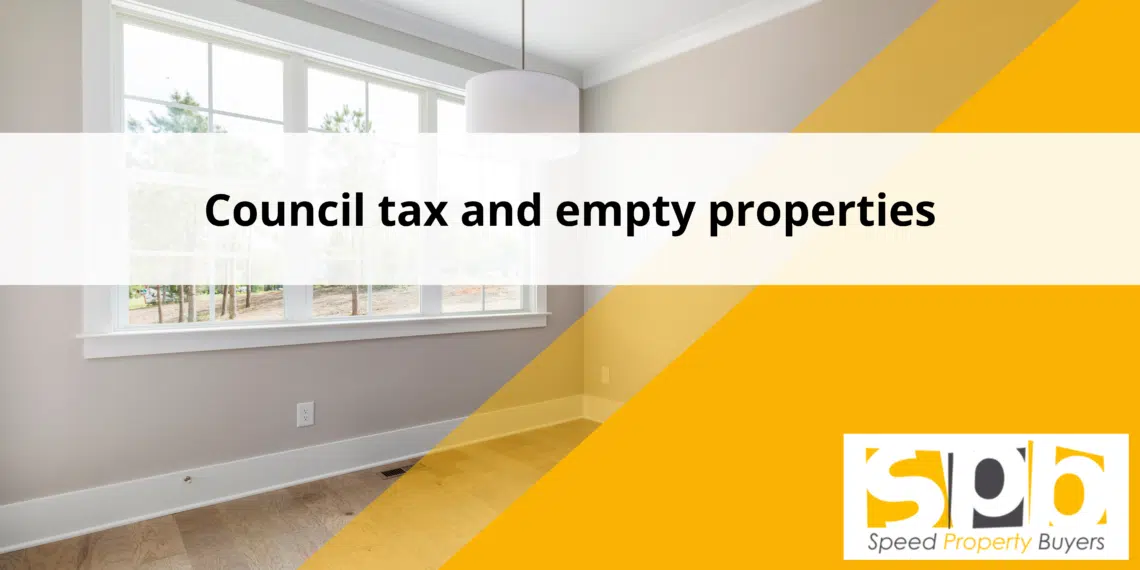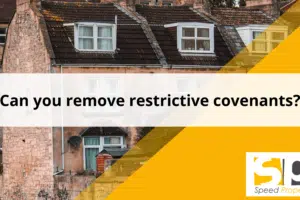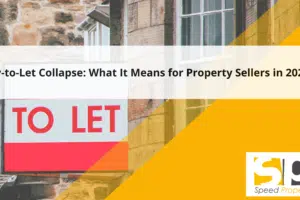Council Tax and Empty Property
Do You Have to Pay Council Tax on Empty Property? (Updated April 2025)
Council Tax can seem complicated, especially when dealing with empty or second properties. This simple, straightforward guide explains how Council Tax works for empty homes and includes the latest changes effective from 1st April 2025.
Understanding Council Tax on Empty Properties
In most cases, you must still pay Council Tax if you own an empty property. This rule applies whether the home is completely unfurnished or substantially unfurnished, and the amount of council tax can vary depending on the local council where your property is located, as each council has different policies.
Some local councils may offer a discount or exemption if your property is empty. However, this isn’t always guaranteed, and the availability of discounts varies widely between councils. Council tax discounts are often removed for uninhabitable properties, forcing owners to pay the full amount. To find out precisely what you’ll need to pay, you should contact your local authority directly, as they can confirm eligibility and advise you of the amount due.
Council Tax Charges and Billing Explained
Even if no one is living in your property, you typically remain responsible for Council Tax payments and are charged Council Tax from the date you acquire the property or until the end of your tenancy. This obligation continues until the local authority explicitly grants a discount or exemption. You need to continue paying your Council Tax in full until you receive confirmation that a reduction or exemption has been applied to your bill.
You should also keep your local council updated about any changes in your circumstances. For example, if you move out or sell the property, you must inform the council immediately because it might affect your Council Tax liability. Note that council tax discounts for second homes and holiday homes have been discontinued, meaning these properties are no longer eligible for any discount if they are unoccupied. Generally, the liability for Council Tax follows the occupancy and ownership of the property. For instance, if a tenant leaves a property empty, the landlord or owner may be liable for the Council Tax until a new tenant moves in.
Exemptions and Discounts for Empty Properties
Empty properties may be eligible for exemptions or discounts on council tax, depending on the circumstances. Here are some scenarios where you might be able to claim a discount or exemption:
- Empty and Unfurnished: If your property is empty and unfurnished, you may be eligible for a discount on your council tax bill. The amount of the discount varies depending on the local authority, so it’s essential to check with your council for specific details.
- Major Home Improvements or Renovations: If your property is undergoing major home improvements or renovations, you might be able to claim a discount on your council tax. You’ll need to provide evidence of the work being carried out and the expected completion date to qualify.
- Derelict or Dilapidated Properties: Properties that are derelict or in such poor condition that they are uninhabitable may be exempt from paying council tax. You will need to provide evidence of the property’s condition to your local council to demonstrate that it is uninhabitable.
- Probate Properties: If the property is in probate, you may be exempt from paying council tax for a certain period. You will need to provide evidence of the probate process and the expected completion date to your local council.
By understanding these scenarios, you can better navigate the complexities of paying council tax on empty properties and potentially reduce your council tax bill.
Special Circumstances and Exceptions for Empty Properties
Some properties might be considered special cases, including those classed as derelict or undergoing major renovations, which may qualify for a council tax exemption. A property is usually classified as derelict if it’s in such poor condition that it cannot safely or reasonably be occupied. If your property fits this description, your local council might exempt it from Council Tax temporarily. You must contact the council directly to determine if your property meets the criteria for exemption.
If you’re renovating your property extensively and it can’t be lived in, you may request that your council temporarily remove it from the Council Tax valuation list. Substantially unfurnished properties may also qualify for a limited tax discount based on their occupancy status and furnishings. Doing this means you’ll not need to pay Council Tax during the renovation period. However, once your renovation is complete and your property becomes habitable again, you must inform your council immediately, as Council Tax payments will resume from that point onwards.
Long-Term Empty Properties and Recent Changes (April 2025)
From 1st April 2025, local authorities across England have adopted stricter policies to tackle the issue of long-term empty properties. Now, if your property has remained empty and unfurnished for one year or longer, you’ll face paying double the normal Council Tax rate as part of the additional council tax measures. This additional charge is known as the long-term empty premium, and it aims to encourage property owners to make homes available again.
This premium continues to apply until your property is either occupied again or furnished to make it suitable for habitation. Additionally, a council tax premium specifically targets second homes and long-term empty properties, with some councils enforcing a 100% premium on second homes effective from April 2025. The underlying aim of the premium is to encourage owners to return their empty properties to use, increasing the supply of available housing.
Second Homes and Holiday Properties – New Rules from April 2025
The rules regarding second homes and holiday properties have also become stricter from April 2025, with property owners potentially liable for full council tax if these homes remain unoccupied. Councils now have the power to charge up to a 100% additional premium on second homes, even if these homes are furnished, if they aren’t regularly occupied. This measure has been introduced to encourage property owners to either occupy these homes more regularly or to let them out as rental properties, benefiting local communities by increasing housing availability.
Again, because policies can differ significantly between local authorities, you should contact your local council directly to clarify how this rule applies to your property. It is also important to understand how much council tax you may need to pay, as various factors such as property type and occupancy status can influence the rates and potential discounts available.
Applying for Council Tax Relief
If you think you may be eligible for a discount or exemption on your council tax, you will need to apply for council tax relief. Here’s how:
- Contact Your Local Council: Reach out to your local council to inquire about the application process and the required documentation. Each council may have different procedures, so it’s crucial to get the correct information.
- Gather Evidence: Collect all necessary evidence to support your claim. This might include receipts for renovation work, a letter from a solicitor confirming the probate process, or photographs showing the property’s condition.
- Complete the Application Form: Fill out the application form provided by your council. Ensure all information is accurate and complete to avoid delays in processing.
- Submit Your Application: Return the completed application form along with the required documentation to your council. Make sure to keep copies of everything you submit for your records.
- Await the Outcome: Wait for the council to process your application. They will notify you of the outcome and any adjustments to your council tax bill.
By following these steps, you can apply for council tax relief and potentially reduce your council tax liability.
Reducing Your Council Tax Liability
There are several ways to reduce your council tax liability, including:
- Claiming Discounts or Exemptions: If you have an empty property, you may be eligible for various discounts or exemptions. Check with your local council to see what you might qualify for.
- Applying for Council Tax Relief: If you are experiencing financial difficulties, you can apply for council tax relief. This can provide temporary financial assistance to help you manage your council tax payments.
- Challenging Your Property Valuation: If you believe your property is in the wrong council tax band, you can challenge the valuation. Successfully reducing your council tax band can lower your council tax bill.
- Installing Energy-Efficient Measures: Some councils offer discounts for properties with energy-efficient measures, such as solar panels or insulation. Check with your local council to see if you qualify for any such discounts.
- Council Tax Reduction Scheme: The Council Tax Reduction Scheme provides financial assistance to low-income households. If you qualify, this scheme can significantly reduce your council tax bill.
Note: The information provided is general guidance and may not apply to your specific circumstances. You should always check with your local council for the most up-to-date information and advice on council tax exemptions, discounts, and relief.
By exploring these options, you can find ways to reduce your council tax liability and manage your finances more effectively.
What to Do If You Disagree With Your Council Tax Bill
If you think your Council Tax bill is incorrect, unfair, or based on an inaccurate property valuation, you have the right to appeal to your local council. You can dispute charges or valuations directly, and your local authority must fairly review any appeal. If successful, your bill or property valuation could be amended accordingly.
Additional Resources and Support Available
Many councils have dedicated Empty Property Teams designed specifically to assist property owners in bringing empty properties back into use and ensuring the property remains compliant with local regulations. They can offer practical advice, suggest financial support options or grants for renovations, and help you avoid incurring the long-term empty property premium.
It’s always beneficial to speak directly with your local council or Empty Property Team for tailored guidance and to learn more about potential discounts, exemptions, and strategies to bring your empty property back into use effectively.
| Property Status | Council Tax Charge (from April 2025) | How to Avoid Extra Charges |
|---|---|---|
| Empty less than 1 year (unfurnished) | Standard Council Tax (potential discounts vary by council) | Check with your local council for potential discounts or exemptions. |
| Empty over 1 year (unfurnished) | Double Council Tax (100% premium) | Occupy or furnish the property; consider renting or selling. |
| Second home (furnished but not regularly occupied) | Up to double Council Tax (up to 100% premium, varies by council) | Regularly occupy or rent out the home. |
| Derelict or undergoing renovation (uninhabitable) | Possible temporary exemption | Contact council to apply for exemption during renovation period. |








